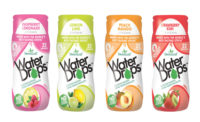Children’s Choices for Eating
David Michael & Co., Philadelphia, worked with U.K.-based Consumer Knowledge Centre (CKC) to present Children’s Choices for Healthy Eating at David Michael’s recent Innovation Roadshow. The lively, informative presentation, hosted by Bryan Urbick, director of research at CKC, offered firsthand insight into the choices kids make when deciding on the foods they eat.
Sixteen eighth graders from a Philadelphia middle
school were given instruction on nutrition and product labels and
participated in a workshop where they evaluated products for taste,
nutrition, marketing influence and other factors.
Urbick presented “Kids & Their Food,”
during which he discussed kids and nutrition, child development issues that
influence food choices and behavioral drives, as well as parents and their
influence — or lack of — on these decisions.
Among the key drivers of kids’ behavior,
according to Urbick, are control and kids’ desire to be “in
charge” of themselves and their immediate environment; aspiration,
i.e., their desire to be treated as older, although not necessarily such
that they have to shoulder the responsibilities of being older; and
creating excitement and stretching boundaries, where they avoid “the
same old thing” and push their (and their parents’) limits.
Urbick — as well as the students — offered
food and beverage marketers tips on how to
communicate with kids.
For example, food is often the first thing to drop off the radar screen when sports, friends or
other activities start eating away at busy schedules. Solution: offer foods
and beverages they can eat while they are doing other activities; or make
your product available where they are so they can consume the product when
they have the chance.
According to kids, word of mouth is one of the best
ways to get a product into their hands.
Urbick has deduced from working with children that
kids may not be quick to communicate it, but they want their parents to buy
more healthy foods and to help them balance their diet. Kids think of
“balance” as weight or space, not fruits, vegetables and
grains. Kids also want healthy foods to taste good, and in that respect,
they don’t differ from their parents. Kids want variety in their
diets, and if they don’t like an item, they prefer to have it
replaced with another item of the same food group. Finally — get this
— according to Urbick, kids don’t mind hearing
“no.”
What not to do with kids:
Don’t patronize them
Don’t treat kids like kids
Don’t overuse nutritional messages/tags
Don’t treat kids like kids
Don’t overuse nutritional messages/tags
What to do:
Make nutrition information on packaging more relevant
Make the information clear and understandable
Kids want warnings on “fatty” foods
An icon system for nutritional information would be welcome
Make the information clear and understandable
Kids want warnings on “fatty” foods
An icon system for nutritional information would be welcome




